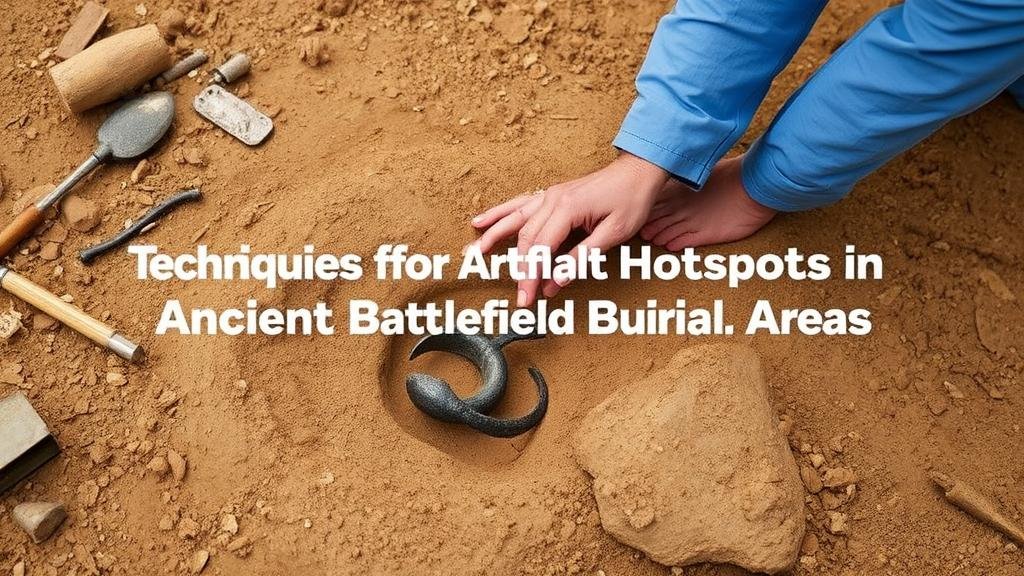Techniques for Identifying Artifact Hotspots in Ancient Battlefield Burial Areas
Techniques for Identifying Artifact Hotspots in Ancient Battlefield Burial Areas
The study of ancient battlefields is a vital aspect of understanding human history, conflict, and culture. Identifying artifact hotspots within burial areas can reveal significant insights into past societies, their practices, and their conflicts. This article explores key techniques utilized in archaeological practice for pinpointing these hotspots, examining both traditional and modern methods.
1. Historical Research and Documentation Analysis
A foundational approach to identifying artifact hotspots in ancient battlefield burial areas involves comprehensive historical research. Historians and archaeologists analyze historical texts, battle accounts, and primary documents to locate burial grounds. For example, the examination of medieval chronicles may reveal locations of significant battles where subsequently marked burial areas existed.
In the study of the American Civil War, researchers have used letters and journals from those who fought to identify possible burial locations, such as at Gettysburg. Combining these documents with modern GIS (Geographic Information Systems) enhances the accuracy of locating potential hotspots.
2. Ground-Penetrating Radar (GPR)
Ground-penetrating radar (GPR) is a non-invasive geophysical method that has gained traction in archeological studies. This technology uses radar pulses to image the sub-surface, providing insights on the location, depth, and size of buried artifacts or structures.
GPR is particularly effective at identifying burial pits and mass graves by detecting differences in material properties in the soil. For example, GPR was successfully employed in locating the burial sites of soldiers at the former battlefield of Antietam, where numerous shallow mass graves had been documented.
3. Aerial Surveying and Remote Sensing
Aerial surveying is another critical method in detecting potential artifact hotspots. Drones equipped with various sensors can capture high-resolution images and create topographical maps that reveal anomalies in the landscape indicative of burial sites.
For example, during recent surveys of the battlefield of Waterloo, aerial photography and LiDAR (Light Detection and Ranging) technology were utilized to identify earthworks and vegetation signals pointing to previously unknown burial areas.
- Drones can cover large areas rapidly, allowing for the efficient identification of potential sites.
- Remote sensing techniques, including multispectral imaging, can enhance visibility of subtle variations in soil composition associated with human burials.
4. Systematic Excavation and Test Pitting
Once potential hotspots are identified, systematic excavation is employed. This method involves carefully uncovering layers of soil, allowing archaeologists to observe and record artifacts locations. Test pitting, which involves digging small pits at regular intervals, enables researchers to determine artifact density in various areas.
An example of this technique was employed at the battlefield of Verdun, where systematic excavation revealed both personal effects of soldiers and military artifacts, providing insight into the demographics and equipment of the troops involved.
5. Community Engagement and Local Knowledge
Local knowledge can be invaluable in identifying artifact hotspots. Engaging with communities adjacent to historic battlefields often leads to discoveries about traditional narratives concerning burial sites. Oral histories passed through generations can highlight areas where local residents have noted unusual ground conditions or found items.
For example, in the study of World War I sites in Northern France, local farming communities shared information about unmarked graves, leading archaeologists to conduct further investigations and uncovering significant findings that were previously unknown.
Conclusion
The identification of artifact hotspots in ancient battlefield burial areas is a multi-faceted approach combining historical analysis, advanced technologies, systematic excavation, and community engagement. Each technique contributes to a comprehensive understanding of the battlefield narrative and sheds light on the human experiences involved in these historical events.
As archaeological methods continue to evolve, future explorations may harness artificial intelligence and machine learning to predict hotspots more effectively, further enhancing our understanding of ancient conflicts and their associated cultural artifacts.
Actionable Takeaways
- Conduct thorough historical research to gather contextual information surrounding ancient battlefields.
- Use advanced technologies such as GPR and aerial surveys to enhance sub-surface investigations.
- Engage with local communities to unlock valuable oral histories and knowledge.
- Use systematic excavation techniques to accurately document findings and understand artifact contexts.



